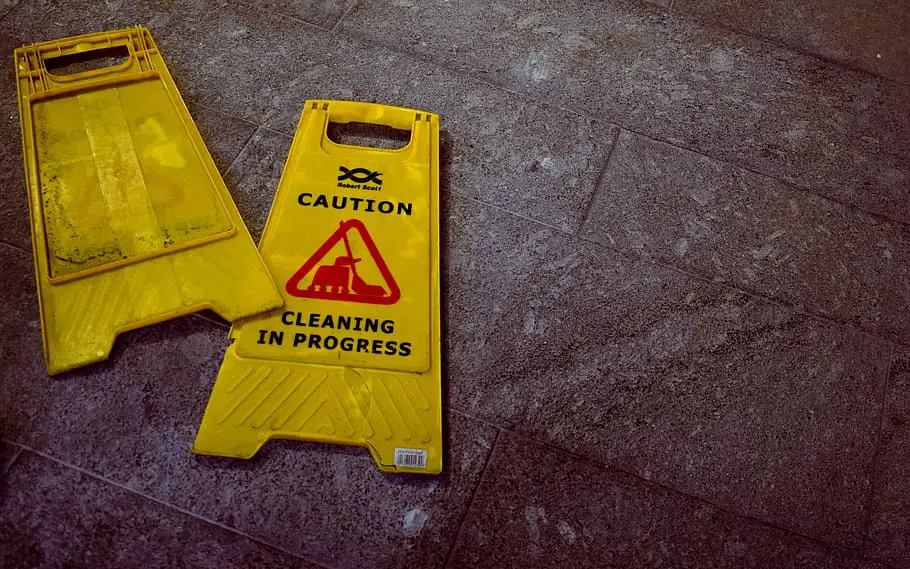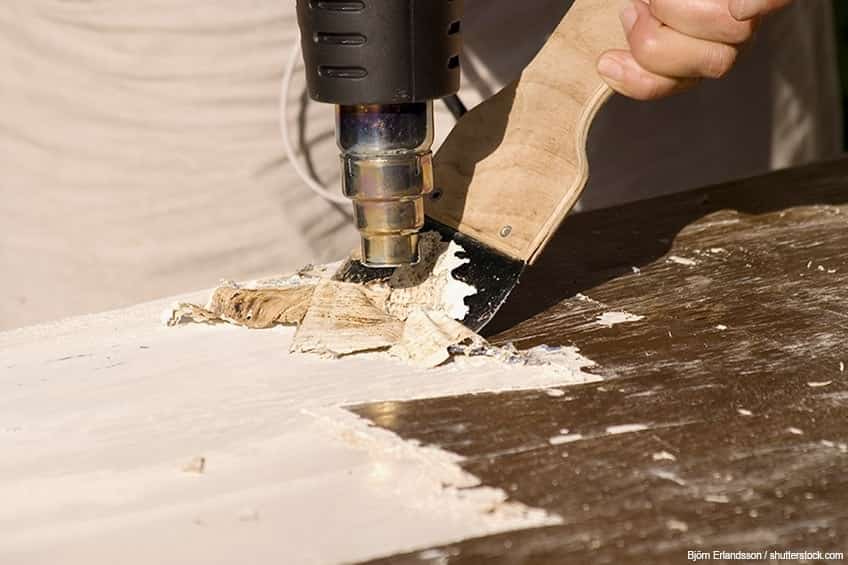Compared to some other types of flooring, epoxy flooring is pretty durable and low maintenance. However, there may come a time when you need to remove it. Whether you’re moving or want a new look, here’s how to do it.
Removing epoxy flooring can be a daunting task, but with the right tools and techniques, it can be done relatively easily.
This blog post will outline the steps necessary to remove epoxy flooring, as well as the tools and supplies you’ll need. We’ll also provide some tips on how to make the process go more smoothly.
So if you’re thinking about removing your epoxy flooring, read on for advice from the pros!
Safety Measures

The first step in the removal process is to prepare your workspace. It’s important that you eliminate any obstructions before beginning the job. Make sure to remove all furniture, shelving, and other belongings from the area to be worked on.
To protect your workspace. Cover any walls or fixtures with plastic sheeting and wear protective clothing such as safety glasses and gloves.
Removing epoxy flooring can be a dangerous task if not done properly. Although the process is relatively simple, there are a few safety measures that should be taken in order to avoid any accidents.
First and foremost, always wear gloves when handling the epoxy flooring. The chemicals in the epoxy can be harmful to your skin and gloves will protect you from any potential irritation.
Secondly, make sure to work in a well-ventilated area. The fumes from the epoxy can be strong and may cause dizziness or nausea if you are not in a well-ventilated space.
Next, you will need to remove all of the furniture from the room. Once the furniture is out of the way, you will need to cover the floor with a tarp or plastic sheeting. This will help to protect the floor from scratches and damage.
Moreover, you will need to use a power washer or stripper to remove the epoxy flooring. Be sure to follow all safety instructions when using power washers or strippers.
Lastly, be sure to dispose of the epoxy flooring properly. Do not simply throw it in the trash as it can be hazardous to garbage collectors. Contact your local waste management company for instructions on how to dispose of epoxy flooring.
Following these simple safety tips will help to ensure the safe and successful removal of your epoxy flooring.
5 Methods to Remove Epoxy Flooring
1. Removing Epoxy with Acetone
First, score the surface of the epoxy with a penetrating solvent, such as acetone. This will help to break the bond between the epoxy and the concrete. Next, use a stiff-bristled brush to scrub the surface of the floor, working the solvent into the epoxy.
Once the majority of the epoxy has been removed, it is time to start stripping. This can be done with a wide variety of chemicals, but for best results, use a strong stripper that is designed for removing epoxy floors.
Apply the stripper according to the manufacturer’s instructions and allow it to sit for the prescribed amount of time.
Once it has had a chance to work, use a floor buffer fitted with a stripping pad to remove any remaining epoxy. Finally, clean the floor with a heavy-duty degreaser to remove any residual stripper or solvent.
2. Removing Epoxy Floor with Paint thinner and Heat gun
You’ll need a paint thinner and a heat gun. You’ll also need some gloves and eye protection. Trust me, you don’t want to get any of this stuff in your eyes.
Start by heating up the epoxy floor with the heat gun. Then, apply the paint thinner to the heated area. Just be careful not to overdo it. You don’t want to melt the flooring.
Once the flooring is heated up, the paint thinner will help to loosen it up. The epoxy will start to soften and you’ll be able to scrape it up with a putty knife. Keep heating and scraping until all of the epoxy is gone.
You can start scraping the flooring up with a putty knife or something similar. It’s important to work slowly and carefully so that you don’t damage the underlying flooring.
Once all of the epoxy is removed, you can give the floor a good cleaning and then apply the new desired flooring.
3. Removing Epoxy Flooring using a Grinder
One of the most effective ways to remove epoxy flooring is to use a grinder. A grinder is a powerful tool that can quickly remove the top layer of epoxy, exposing the underlying concrete.
You will need a grinder, a concrete chisel, a hammer, and safety goggles.
First, attach a heavy-duty diamond grinding wheel to the grinder. Next, start the grinder and begin moving it back and forth across the surface of the floor.
The second step is to grind away the top layer of the epoxy floor. Be sure to wear your safety goggles while you are doing this. Next, use the chisel and hammer to break up the concrete beneath the epoxy flooring.
The grinding action will wear away the top layer of epoxy, leaving behind a smooth concrete surface.
4. Using Chemicals (Caustic Strippers etc)
If you are not comfortable using a grinder, you can also remove epoxy paint from the garage floor with a chemical stripper.
Chemical strippers are available at most hardware stores and home improvement centers. Be sure to follow the manufacturer’s instructions carefully when using these products.
Note: Caustic strippers and all other chemicals that can be used to remove an epoxy coating have health risks and take more time to do the job.
5. Mechanical Removal
Mechanical removal is one of the most common methods used for removing epoxy flooring. This involves physically grinding down the epoxy layer using a floor grinder or shot blaster. Safety precautions are paramount when using these powerful machines.
Always use personal protective equipment, such as dust masks, safety goggles, and gloves.
- Prepare the area by removing all movable objects.
- Start the grinder or shot blaster and move it across the surface in a systematic way.
- Continuously sweep up the dust and epoxy particles to prevent them from spreading.
Finishing the Job
The last step in the removal process is to finish the job. Use a damp mop or sponge to wipe down any remaining residue, then let it dry completely before applying a new epoxy floor coating. This will help ensure that your new epoxy flooring looks its best.
If you’re looking for a more permanent solution, you may want to consider using epoxy grout. It’s a durable material that provides superior protection against wear and tear.
Cost of Removal
The cost of removing an epoxy floor can vary depending on the size and complexity of the job. Generally speaking, you can expect to pay anywhere from $2,000-$5,000 for a standard-sized room. If the area is larger, or more complicated to remove, then the cost can go up.
The best way to determine the exact price is to get an estimate from a local contractor.
When calculating your costs for epoxy removal, bear in mind that you may also need additional tools such as floor buffers or chemical strippers, which will add to your overall budget. Additionally, it’s important to factor in the time and labor required for the job.
Removing Epoxy Flooring From Concrete
Removing epoxy flooring over concrete can be a pain, but it doesn’t have to be. With a little know-how and the right tools, you can get the job done quickly and easily. Here’s what you need to do:
First, make sure you have the right tools. You’ll need a putty knife, a scraper, and a stiff brush. You may also want to use a power washer to remove any stubborn residue.
Next, loosen the edges of the epoxy with the putty knife. Then, begin scraping it up with the scraper. Work in small sections and be sure to scrape up as much of the epoxy as possible.
Once you’ve removed all of the epoxy material, use the stiff brush to remove any remaining residue. If necessary, you can also use the power washer to remove any stubborn stains.
And that’s it! With a little elbow grease, you can easily remove epoxy flooring from your concrete floor.
Related Topics:
Conclusion
So there you have it, five ways to remove epoxy flooring. We hope one of these methods works for you. Please remember to be careful when using any chemicals and read all safety instructions before starting your project.
Whichever method you choose, be sure to take the necessary precautions and protect yourself and your surroundings.
As always, if you have any questions or need help, feel free to leave a comment below. We love getting feedback from our readers and helping out where we can!
FAQ
Are epoxy floors removable?
Yes, epoxy floors are removable but it won’t be an easy job. However, it will be if you hire a professional flooring remover with the right tools. Yet not a straightforward task to do.
What is the easiest way to remove epoxy?
Using acetone to remove epoxy flooring is considered an easier way. Because it simply loosens the epoxy and you can remove it with any sharp object. But what method you will use also depends on the condition of your epoxy floor.
Can epoxy flooring be used in bathrooms?
Epoxy flooring is not an ideal option for bathrooms because it is known as a slippery flooring surface. So, the chances of slip and fall accidents are higher in bathrooms due to a lot of moisture. Moreover, epoxy flooring is temporarily waterproof so it can’t be prevented from water for a long time duration.


